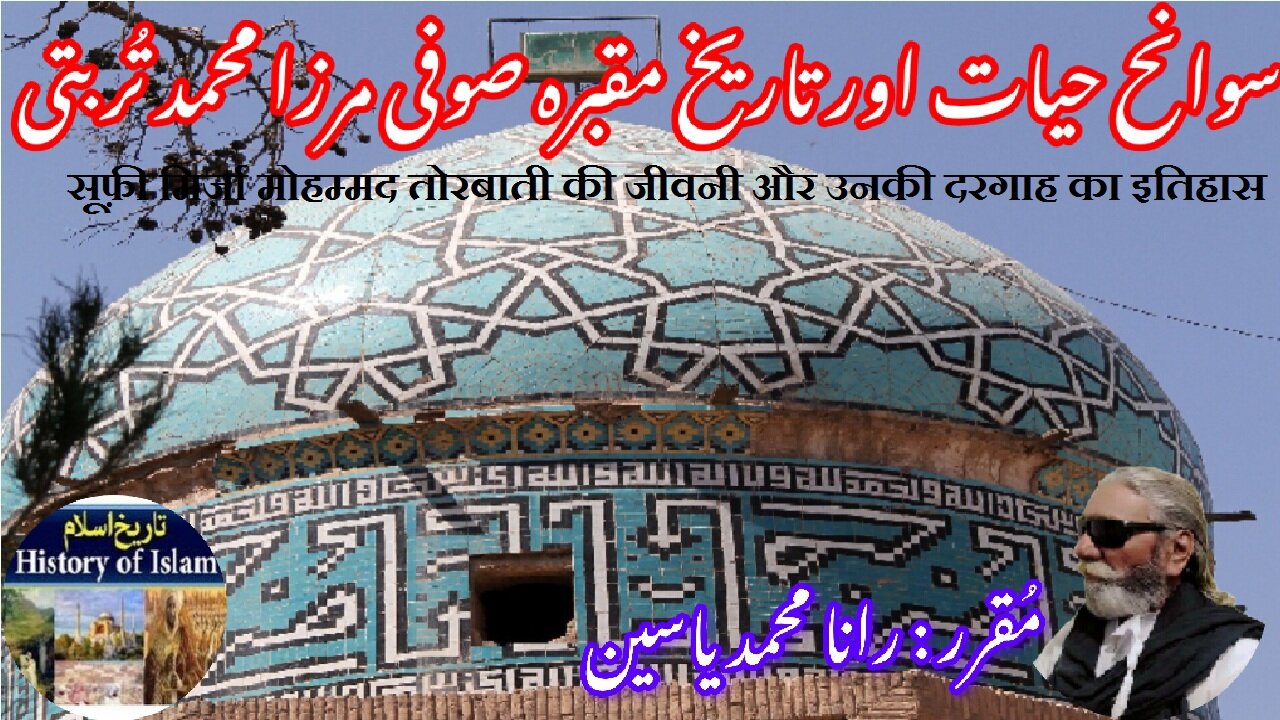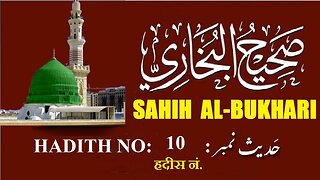Premium Only Content

Sufi Mirza Mohammad Torbati | सूफी मिर्ज़ा तोरबाती | صوفی محمد تربتی کی سوانح عمری اور مزار کی تاریخ
@islamichistory813 #sufi #mirza #torbati #sufisaint #culturalheritage #biography #islamicmysticism #islamicphilosophy #shrine #historicalfigures
Biography of Sufi Mirza Mohammad Torbati and the history of his shrine
Dekhti Aankhooon aur sountay kaanoon ko Asslamoalaikum, sisters, brothers friends and elders, in informative series videos of Islamic ascolars, sufisaints, cultural heritages, islamic philosophys, islamic mysticisms and historical figures. today we are describing biography of Sufi Mirza Mohammad Torbati and the history of his shrine.
Mushtaq Ali Shah’s martyrdom in 1792 cemented his place as a revered figure in Sufi circles. His death symbolized the ultimate sacrifice for his faith and spiritual practice. His music, his devotion, and his disregard for societal norms continue to inspire generations of Sufis and those who seek to experience the Divine through mystical means. Shah's martyrdom for playing his setar and singing during the call to prayer reflects the tension between mysticism and orthodoxy that often characterized the lives of many Sufi Mirza Mohammad Torbati, better known as Mushtaq Ali Shah, was a notable Sufi mystic, Muslim musician, and a member of the Nimatullahi Order of Sufis. He was born in the 18th century, though the precise details of his birth are not clearly recorded in historical sources. He was recognized for his deep spirituality and unique approach to music and mysticism, ultimately leaving behind a legacy of devotion and martyrdom. Shah’s life and contributions are revered in Sufi circles, especially among those who practice the Nimatullahi Order and other related mystical traditions.
Mirza Mohammad Torbati, or Mushtaq Ali Shah, was born in a period where Sufism, music, and spiritual practices were intricately woven into the fabric of Muslim life. His early life remains somewhat obscure, and there is limited biographical information regarding his family and the circumstances of his upbringing. However, it is known that he was deeply influenced by the mystical teachings of Sufism from an early age. His spiritual path led him to become a member of the Nimatullahi Order, a Sufi order known for its emphasis on the internal experience of divine love and devotion.
The Nimatullahi Order, founded in the 14th century, had a profound impact on Shah’s life. It focuses on inner purification and deep devotion to God, often employing music, poetry, and dance as a way to achieve spiritual ecstasy and closer communion with the Divine. Mushtaq Ali Shah’s attraction to the order and its mystical practices was no doubt rooted in his desire to experience the divine directly and transcend worldly concerns.
As part of the Nimatullahi Order, Shah followed the path of a *majdhoub*, a term used to describe a person who experiences divine intoxication, or *wajd*. Majdhoubs are typically individuals whose mental faculties are overwhelmed by the divine presence and who experience a state of heightened spiritual awareness. For Mushtaq Ali Shah, this state was profoundly linked with his music. A highly skilled musician, he played the *setar*, a traditional Persian string instrument, and his music became a medium through which he could channel his spiritual devotion. His performances were not merely musical; they were acts of spiritual surrender, where he allowed himself to be fully immersed in the divine presence.
Mushtaq Ali Shah’s music, especially his setar playing, became an essential part of his spiritual practice. As a *majdhoub*, he was known to become spiritually intoxicated while playing, experiencing a deep connection to the Divine that led him to disregard societal norms and expectations. His performances drew significant attention, attracting people from various walks of life, including Ismailis and other groups who were drawn to his music and the mysticism he embodied.
Shah’s music, infused with his spiritual energy, was seen by many as a direct expression of the divine. His performances were not just for entertainment, but for creating an atmosphere of spiritual awakening. He used the sound of the *setar* and his voice to guide others toward a deeper connection with the divine, creating an environment where listeners could transcend the physical world and experience a heightened state of consciousness.
However, his disregard for conventional social norms, particularly his expression of religious practices through music, led to controversy. One of the key incidents that led to his martyrdom was his performance at the Jum'ah Masjid on 27th Ramadan, 19 May 1792. It is said that Mushtaq Ali Shah sang and played his *setar* while also singing the call to prayer (*adhan*), an act that was considered blasphemous by some religious authorities of the time. His actions were viewed as a challenge to the conventional religious and social structures, particularly because of the mystical and musical elements he introduced into religious practices.
Following his death, Mushtaq Ali Shah's shrine became a significant site of pilgrimage. His mausoleum, or *mazar*, is located in the area of his death, and it has attracted worshippers and mystics who revere him as a saint and martyr. The shrine, which has become a symbol of the divine intoxication he experienced through music, continues to draw visitors who seek blessings, spiritual guidance, and an understanding of the deep connection between music, mysticism, and the Divine.
The shrine remains a site where people can reflect on his life and teachings. Pilgrims who visit the site often engage in prayer, recite poetry, and, in some cases, play musical instruments in homage to Shah’s legacy. His life and sacrifice have been immortalized through stories, poetry, and songs that celebrate his devotion and his commitment to spiritual truth, regardless of the cost. Mushtaq Ali Shah’s contributions to the mystical traditions of Islam, particularly through his music and his martyrdom, continue to resonate within the broader Sufi tradition.
With this, we seek your permission until tomorrow, tomorrow we will describe the biography of Makhdoom Ali Mahimi Shafii and the history of his Shrine.
======================
-
 4:12
4:12
ISLAMIC HISTORY
7 hours agoHadith Nabwi Sahih Al-Bukhari Hadith No. 10 صحیح البخاری حدیث نمبر Ilm aur Noor ki Raah
21 -
 LIVE
LIVE
Dear America
2 hours agoPOLITICAL VIOLENCE MUST END!! First Charlie, Now ICE…
2,394 watching -
 LIVE
LIVE
Badlands Media
6 hours agoBadlands Daily: September 25, 2025
3,343 watching -
 LIVE
LIVE
Wendy Bell Radio
4 hours agoBLOOD ON THEIR HANDS (NEW)
7,631 watching -
 12:58
12:58
Degenerate Jay
2 hours agoMarvel's Wolverine Gameplay Looks Crazy!
1.73K1 -
 24:01
24:01
Bearing
2 hours agoWOKE LOSER Don Lemon MELTS DOWN on Piers Morgan 💥😂
60012 -
 1:30:36
1:30:36
Chicks On The Right
4 hours agoDallas ICE facility attack, Dems stoke violence, JD shines in latest speech, Tucker and the Jooos
36.7K11 -
 LIVE
LIVE
LFA TV
17 hours agoBREAKING NEWS ALL DAY! | THURSDAY 9/25/25
3,798 watching -
 1:27:45
1:27:45
Game On!
22 hours ago $0.95 earnedThursday Night Football SHOWDOWN! Seahawks vs Cardinals Divisional CLASH!
78.8K4 -
 28:53
28:53
Clownfish TV
1 day agoYouTube ADMITS They CENSORED Conservatives! What Else is Google Hiding?! | Clownfish TV
61.9K51